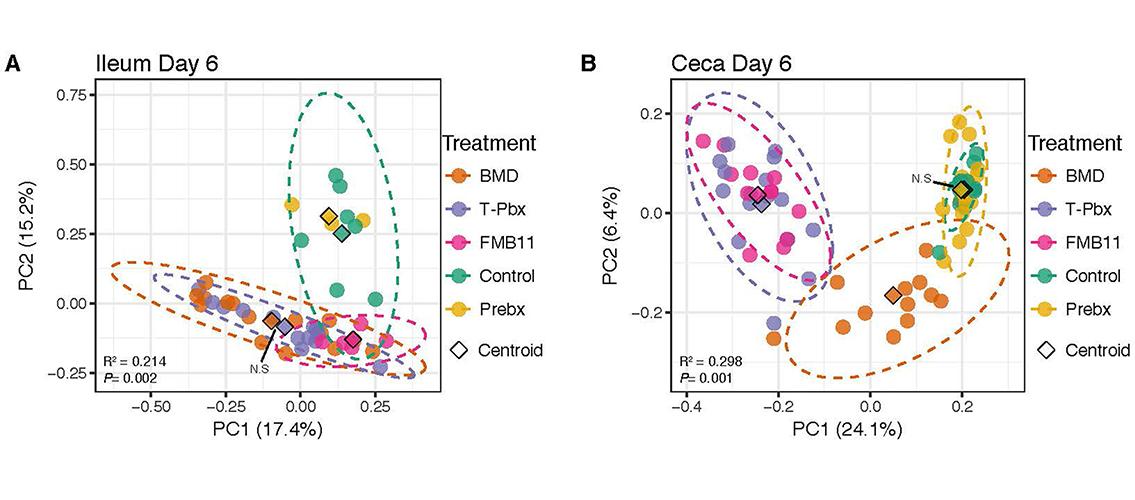
Commercial poultry farmers give low doses of antibiotics to their flocks as a method to improve health and production. In recent years, however, it has become known that antibiotic use has deleterious effects, such as the potential development of antibiotic resistance that makes it difficult to treat illnesses. Poultry researchers are searching for other means to keep flocks healthy and commercially productive.
A recent paper co-authored by several MSI PIs describes the use of probiotics as an alternative to antibiotics. The researchers tested probiotic supplements that were tailored to the turkey microbiome as well as non-tailored supplements. The turkey-tailored probiotics performed as well as antibiotic treatments, indicating that probiotic treatments that are developed for the microbiomes of a specific species of poultry could be substituted for the current antibiotic treatment. This result is significant for the poultry industry and may also have implications for humans. The researchers used bioinformatics tools available through MSI for this project.
The paper was published in the journal mBio: TL Ward, BP Weber, KM Mendoza, JL Danzelsen, K Llop, K Lang, JB Clayton, E Grace, J Brannon, I Radovic, M Beauclaire, TJ Heisel, D Knights, C Cardona, M Kogut, C Johnson, SL Noll, R Arsenault, KM Reed, TJ Johnson. 2019. Antibiotics and Host-Tailored Probiotics Similarly Modulate Effects on the Developing Avian Microbiome, Mycobiome, and Host Gene Expression. mBio 10(5). doi: 10.1128/mBio.02171-19.
The MSI PIs who co-authored this paper include:
- Associate Professor Tim Johnson (Veterinary and Biomedical Sciences; bio and research)
- Co-author Dr. Bonnie Weber is a member of the Johnson MSI group.
- Professor Johnson uses MSI for investigations into the mechanisms and dissemination of antibiotic resistance and to develop alternatives to antibiotics in animal agriculture.
- Associate Professor Dan Knights (Computer Science and Engineering; BioTechnology Institute; Knights Lab)
- Co-author Jonathan Clayton is a member of the Knights MSI group.
- Professor Knights uses MSI to develop methods that bring precision medicine to the microbiome.
- Professor Carol Cardona (Veterinary and Biomedical Sciences; bio and research
- Professor Cardona uses MSI for whole-genome sequencing of important poultry viruses.
- Professor Kent Reed (Veterinary and Biomedical Sciences; bio and research)
- Professor Reed uses MSI for functional genomics studies of the turkey.
Image Description: Antibiotics and probiotics similarly alter the turkey microbiome. Principal-coordinate analysis of unweighted UniFrac distances of the turkey ileum (A) and cecum (B) microbiome, colored by treatment: control, antibiotic (BMD), turkey-tailored probiotic (T-Pbx), commercial probiotic (FM-B11), and prebiotic (Prebx). Differences in centroids by treatment (denoted by a diamond) were tested by PERMANOVA, with R2 and P values reported. Pairwise PERMANOVA was also performed on each treatment pair, with insignificant differences in centroids (P _ 0.05) denoted by N.S. Image and description, Ward et al., mBio 10(5). doi: 10.1128/mBio.02171-19 (2019). © American Society for Microbiology.
posted on November 20, 2019